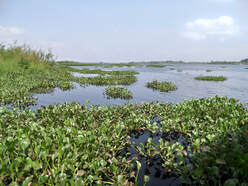Other
|
Variations in Benthic Macroinvertebrate Communities and Biological Quality in the Aguarico and Coca River Basins in the Ecuadorian Amazone
June 2021 Given the lack of knowledge about functional diversity and bioassessment programs, management is missing the needed evidence on pollution and its effect on biodiversity and functional ecology. Therefore, we investigated the composition and distribution of the macroinvertebrate community along two rivers. Results indicate that elevation, pH, temperature, width, and water depth played an important role in the taxa and functional feeding groups (FFG) composition and that diversity of taxa and FFG were generally scarce but were more abundant in good quality sites. The findings of this research can be used as baseline information in the studied region since a dam was constructed two years after the sampling campaign, which has been operating since. Furthermore, the results can be used to fill the knowledge gaps related to the bioassessments of other similar systems, particularly for a tropical rainforest. |
|
Research hotspots and current challenges of lakes and reservoirs: a bibliometric analysis
April 2020 Despite covering a small portion of the earth’s surface, lakes and reservoirs offer enormous benefits to human society, environmental well-being, and economic welfare. We conducted a bibliometric analysis as a systematic data gathering to perform a large-scale overview and assess global trends of their scientific publications. Moreover, a second goal is to differentiate their research hotspots and current challenges given the different nature of their origin and functionality. Both freshwater bodies show comparable attention on their roles in socioeconomics while much higher concerns about sanitation and human health have been paid in reservoirs compared to its counterpart. Clear obtained distinctions in the hotspots and challenges of lake and reservoir research can contribute to better decision support systems of the two waterbodies. |
|
Municipal wastewater treatment with pond technology: Historical review and future outlook
April 2020 This review aims at delivering a comprehensive overview of the historical development and current state of WSPs, and providing further insights to deal with their limitations in the future. The 21st century is witnessing changes in the way of approaching conventional problems in pond technology, in which WSPs should no longer be considered as a low treatment technology. Advanced models and technologies have been integrated for better design, control, and management. Significant gaps need to be filled in understanding mechanisms of greenhouse gas emission, climate change mitigation, pond ecosystem services, and the fate and toxicity of emerging contaminants. |

